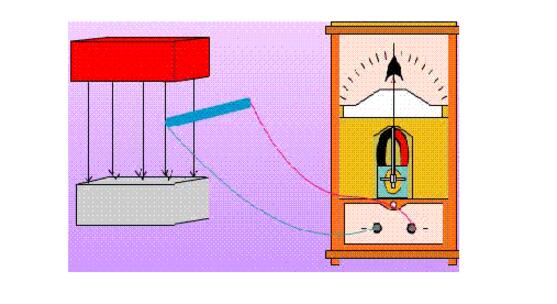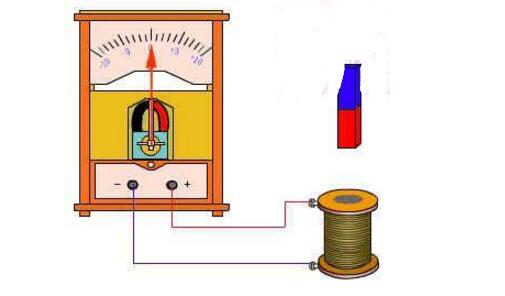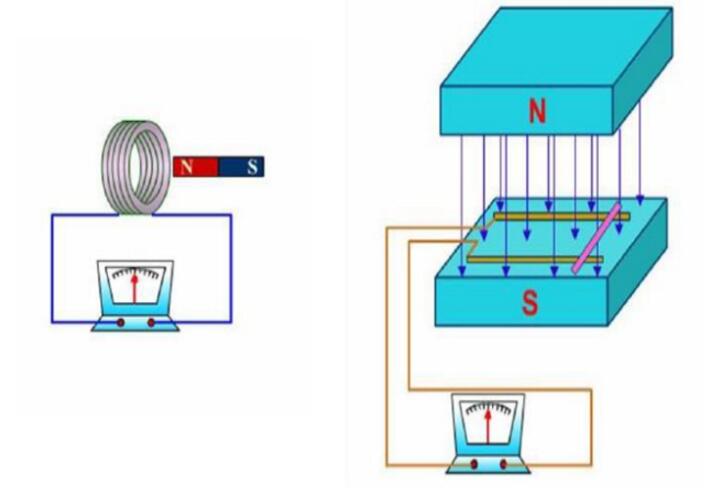The law of electromagnetic induction is also called Faraday's law of electromagnetic induction. The phenomenon of electromagnetic induction refers to the phenomenon of induced electromotive force due to changes in magnetic flux. For example, when a part of a conductor of a closed circuit performs a motion of cutting a magnetic induction line in a magnetic field, a current is generated in the conductor. The generated current is called an induced current, and the generated electromotive force (voltage) is called an induced electromotive force.
The direction of the electromotive force in the law of electromagnetic induction can be determined by Lenz's law or right-hand rule. Right hand rule content: Stretch the right hand so that the thumb is perpendicular to the four fingers, the palm is toward the N pole of the magnetic field, the direction of the thumb is consistent with the direction of the conductor movement, and the direction indicated by the four fingers is the direction of the induced current in the conductor (induced electromotive force) The direction is the same as the direction of the induced current). Lenz's law states that the magnetic field of the induced current obstructs the change of the original magnetic flux. In short, the magnetic flux becomes larger, and the generated current has a tendency to make it smaller; while the magnetic flux becomes smaller, the generated current has a tendency to make it larger.

Faraday discovered the law of electromagnetic induction. In the teaching materials of middle school for nearly 30 years, the textbooks used also wrote that Faraday discovered the law of electromagnetic induction. On the 15th page of the 3rd edition of the April 3rd edition of the Standard High School Curriculum Standard Experimental Textbook, Newman (FENeumann, 1798-1895) and Weber (WEWer, 1804-1891) conducted rigorous analysis of theoretical and experimental data. Later, in 1845 and 1846, it was pointed out that the magnitude of the induced electromotive force in a closed circuit is proportional to the rate of change of the magnetic flux passing through the circuit, which is later known as Faraday's law of electromagnetic induction. That is to say, the author of the electromagnetic induction law in the textbooks used in physics teaching in middle schools, universities and middle schools is wrong. So, who discovered the law of electromagnetic induction? To answer this question clearly, it is necessary to clarify the contribution of Faraday (Michael Faraday, 1791 - 1867), Heinrich Friedrich (Emil Lenz 1804 - 1865) Newman, Weber to electromagnetic induction.

Faraday's law was originally an experimental law based on observation. Later it was formalized, and its restricted version of partial derivatives, along with other electromagnetic laws, was listed in the modern Heaviside version of Maxwell's equations.
Faraday's law of electromagnetic induction is based on Faraday's experiment in 1831. This effect was discovered by Joseph Henry at the same time, but Faraday was published earlier.
See Maxwell's discussion of the original work of electromotive forces.
In 1834, Lenz's law, discovered by the German scientist Heinrich Lenz in the Baltic Sea, provides the direction of the induced electromotive force and the direction of the current that generates the induced electromotive force.
2, ask a questionAfter the discovery of the current magnetic effect by HC Oster in 1820, many physicists tried to find its inverse effect and proposed whether magnetism can generate electricity and whether magnetism can affect electricity.
3. ResearchIn 1822, when measuring the geomagnetic intensity, DFJ Alago and A.von Humbold accidentally found that the metal had a damping effect on the oscillation of the nearby magnetic needle.
In 1824, Arago made a copper disk experiment based on this phenomenon, and found that the rotating copper disk would drive the magnetic needle that was freely suspended above, but the rotation of the magnetic needle was not synchronized with the copper disk. A little later, electromagnetic damping and electromagnetic driving were the first electromagnetic induction phenomena found, but they were not directly indicated as induced currents, which could not be explained at the time.
4, the law is proposedIn August 1831, Faraday wrapped two coils on both sides of the soft iron ring, one of which was a closed loop, a magnetic needle was placed in parallel near the lower end of the wire, and the other was connected to the battery pack, and the switch was connected to form a closed loop with power. It was found that the switch was closed and the magnetic needle was deflected; the switch was turned off and the magnetic needle was reversely deflected, which indicated that an induced current appeared in the coil of the batteryless unit. Faraday immediately realized that this was a non-constant transient effect. Then he did dozens of experiments, summarizing the situation of generating induced current into five categories: changing current, changing magnetic field, moving constant current, moving magnet, moving conductor in magnetic field, and formalizing these phenomena. Named electromagnetic induction. Furthermore, Faraday found that under the same conditions, the induced current generated in different metal conductor loops is proportional to the conductivity of the conductor. He thus realizes that the induced current is generated by an induced electromotive force independent of the nature of the conductor, even if there is no loop. Inductive current, induced electromotive force still exists.
Later, the Lenz's law for determining the direction of the induced current and the Faraday's law of electromagnetic induction describing the quantitative law of electromagnetic induction are given. According to the different causes, the induced electromotive force is divided into two kinds: the dynamic electromotive force and the induced electromotive force. The former originates from the Lorentz force, and the latter originates from the rotating electric field generated by the changing magnetic field.

The electromotive force caused by Faraday's law of electromagnetic induction due to the relative motion of the circuit and the magnetic field is the fundamental phenomenon behind the generator. When a permanent magnet moves relative to an electrical conductor (and vice versa), an electromotive force is generated. If the wire is connected to an electrical load at this time, the current will flow and thus generate electrical energy, which converts the energy of the mechanical motion into electrical energy. For example, a drum generator. Another generator that implements this concept is the Faraday disc.
2, transformerThe electromotive force predicted by Faraday's law is also the operating principle of the transformer. When the current in the coil transitions, the current in the transition produces a magnetic field in the transition. The second wire in the range of the magnetic field will experience a change in the magnetic field, and the coupling magnetic flux will also change. Therefore, there is an electromotive force in the second coil, which is called an induced electromotive force or a transformer electromotive force. If both ends of the coil are connected to an electrical load, current will flow.
3, electromagnetic flowmeterFaraday's law can be used to measure the flow of a conductive liquid or plasma, such an instrument is called an electromagnetic flow meter.
Nea Standard Steel Pole,Hot-Dip Galvanized Steel Pole,Steel Pole With Asphalt Coating,Philippines Nea Standard Pole
Jiangsu Baojuhe Science and Technology Co.,Ltd. , https://www.galvanizedsteelpole.com